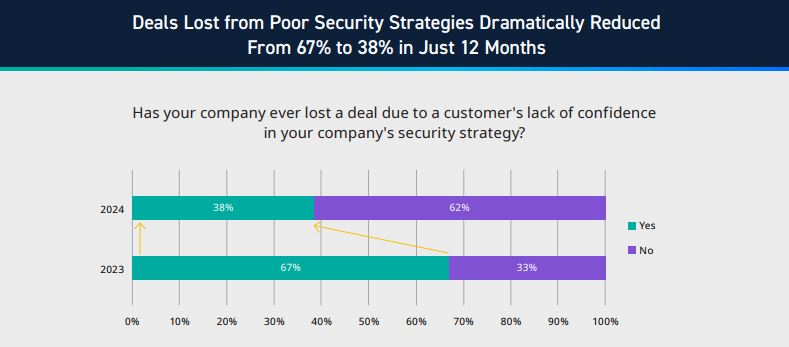As technology continues to advance at a breakneck pace, cyber threats are evolving in tandem, becoming more sophisticated and difficult to detect. Security experts today agree that it is increasingly imperative to safeguard sensitive data, protect critical infrastructure, and ensure business continuity.
The recently released “2024 State of the Security Team” report by LogRhythm offers a comprehensive and insightful analysis of the current cybersecurity terrain, shedding light on companies’ critical challenges and the strategic adaptations necessary to fortify their digital defenses. Through extensive research and a global survey of over 1,100 security professionals, this study provides a detailed snapshot of the evolving threats, highlighting the key factors driving strategic shifts, the allocation of resources, and the underlying confidence levels of security teams in addressing breaches and mitigating risks.
Emerging Challenges and AI Influence
One of the standout points is the significant impact of artificial intelligence on security strategies. AI technologies, while beneficial, introduce new vulnerabilities and require organizations to continuously adapt their security measures. A key takeaway is that AI-driven threats have prompted changes in security strategies for 65% of organizations, illustrating the dual role AI plays as both a tool and a threat in cybersecurity.
Regulatory changes continue to shape security practices, with 98% of surveyed organizations adjusting their strategies in response to new or existing regulations. The need for compliance has led to a notable shift in operational tactics, including the discontinuation of certain products or services by 25% of businesses to meet legal standards.
These statistics demonstrate the considerable influence regulatory requirements have on business operations and strategic decision-making in cybersecurity, as failure to comply with regulations can result in severe consequences, including financial penalties and reputational damage.
Shifting Priorities and Resource Allocation
Also highlighted is a significant shift towards increased resource allocation for cybersecurity. A majority of companies have either maintained or increased their cybersecurity budgets in response to evolving threats. This trend reinforces the idea that cybersecurity is increasingly becoming a critical aspect of business strategy, necessitating substantial investment to ensure flawless defenses. As cybercriminals become more sophisticated, organizations have allocated adequate resources to protect their assets and maintain customer trust.
Bridging the communication gap between security teams and non-security executives continues to be an uphill battle, as 59% of cybersecurity professionals struggle to effectively articulate the importance and necessity of implementing specific security solutions and protocols. This further emphasizes the importance of enhancing reporting mechanisms to improve decision-making and align security strategies with business objectives.
Key Findings and Future Outlook
- 95% of companies reported altering their cybersecurity strategies within the past year due to evolving threats and technologies.
- A reduction in deals lost due to security concerns from 67% to 38% within a year, reflecting better alignment of security strategies with business objectives and improved security defenses.
- 78% of security teams feel confident in their resources to defend against cyberattacks, marking an increase in confidence in cybersecurity posture levels among professionals.

2024 State of the Security Team: Navigating Constant Change – LogRhythm
Industry experts today advocate for a multifaceted approach to cybersecurity, recommending strategies such as leveraging cloud infrastructure, prioritizing high-risk assets, and outsourcing certain security functions to manage resources effectively. Looking ahead, the emphasis on executive leadership and the development of adaptive, forward-thinking security strategies are highlighted as crucial for fostering a secure and resilient digital environment.
The Wrap
The “2024 State of the Security Team” report paints a detailed picture of the cybersecurity challenges that organizations face today and the strategies they have employed to navigate these issues. As businesses continue to adapt to increasingly complex and rapidly changing threats, the role of cohesive, strategic planning and strict leadership in cybersecurity cannot be overstated.
Fostering a culture of cybersecurity awareness and collaboration across all levels of an organization is essential for protecting against malicious actors. These survey insights can make a major difference for any organization striving to enhance its security posture in a society that becomes more technology-reliant day by day.







